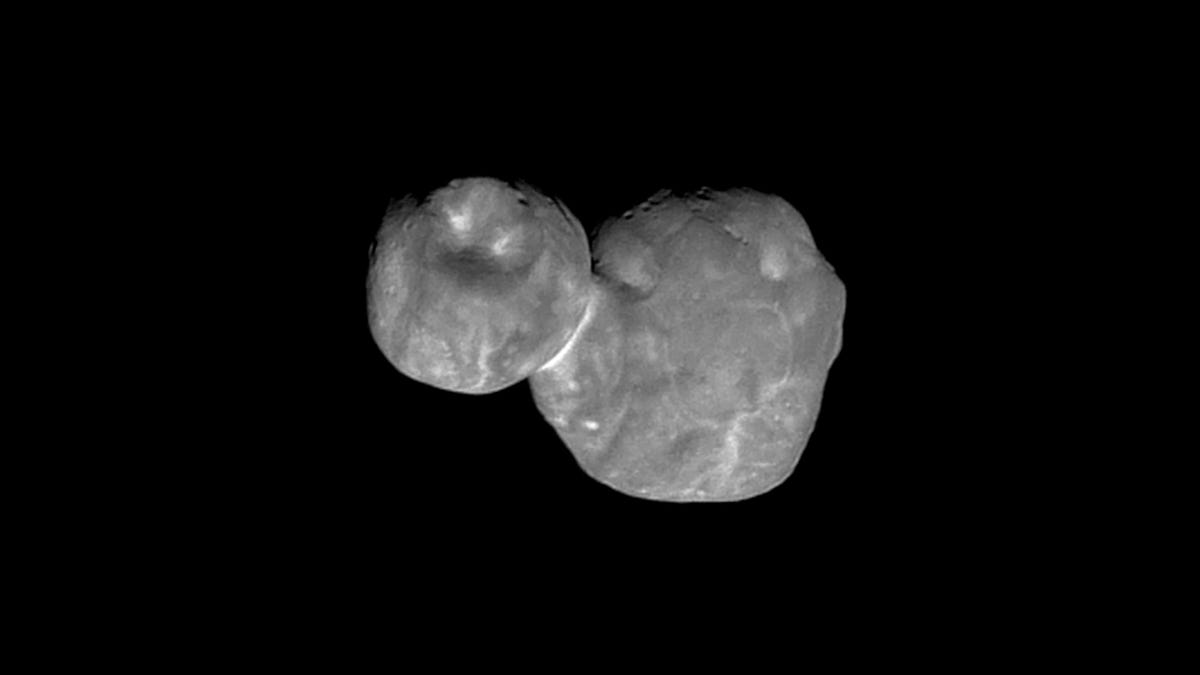NASA delivers clearest view yet of space snowman Ultima Thule
The distant, dual-lobed world has a head like a hole.
On New Year's Day, when NASA's New Horizons spacecraft snapped images of the most distant world we've ever explored, the vehicle was zooming past the rock at 32,000 miles per hour.
Not the most conducive conditions for a super-high-resolution shot of the world we know as Ultima Thule.
Still, the team at NASA came through with the goods, revealing Ultima Thule as a contact binary -- a dual-lobed rock that many suggested looked like a snowman, or Star Wars droid BB-8. The flyby had paid off, and New Horizons would be beaming images back to Earth for the next 20 months, give or take.
On Jan. 24, the New Horizons team revealed the most high-resolution image of Ultima Thule yet, showing that, yes, it does look like a snowman, but the poor bugger has a big ol' dent right in its small head. The image above was taken by New Horizons' wide-angle Multicolor Visible Imaging Camera (MVIC) on Jan. 1, just seven minutes before the spacecraft's closest approach to the snowman. It's been digitally enhanced via a process known as "deconvolution," which helps to sharpen the image.
"This new image is starting to reveal differences in the geologic character of the two lobes of Ultima Thule, and is presenting us with new mysteries as well," Alan Stern, principal investigator with the New Horizons team, said in a statement.
The high-res image provides a new view of Ultima Thule because the sun is lighting the lobes from a different, more oblique angle to previous images. It shows numerous depressions pockmark the distant world, including the large pit on the smaller lobe which is around 4 miles (about 6.8 kilometers) in diameter. The New Horizons team suggests a number of potential reasons for the depressions, including impact craters, the release of materials from within Ultima Thule ("venting") or "collapse pits."
And although this is our best photo yet, the team expects even more images to be beamed back over the next month in better color and better resolution. Really, this is just the tip of the snowman.
Ultima Thule is the first Kuiper Belt object we've flown past and been able to snap, courtesy of the New Horizons spacecraft that gave us these stunning images of Pluto. At some 4 billion miles from Earth and potentially 4.5 billion years old, Ultima Thule can tell us a lot about the formation of bodies within our solar system.
CES 2019: See all of CNET's coverage of the year's biggest tech show.
NASA turns 60: The space agency has taken humanity farther than anyone else, and it has plans to go further.


